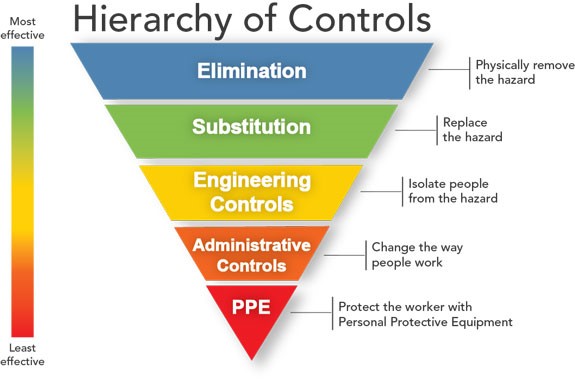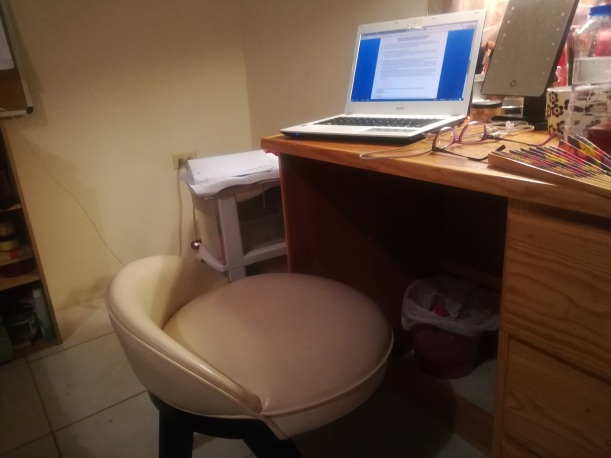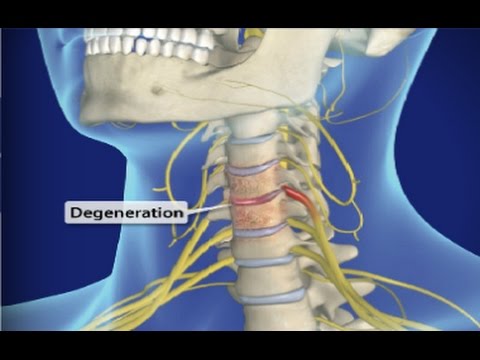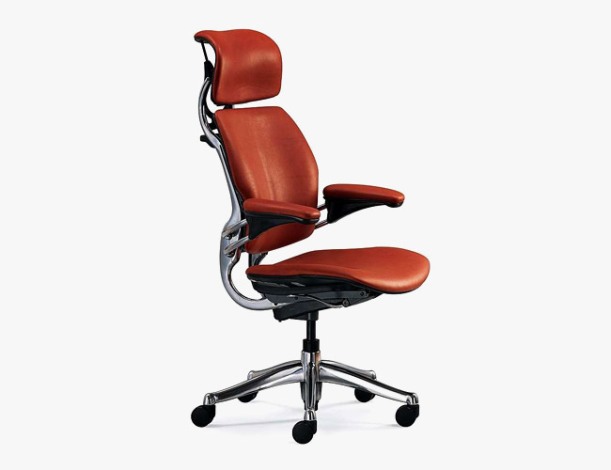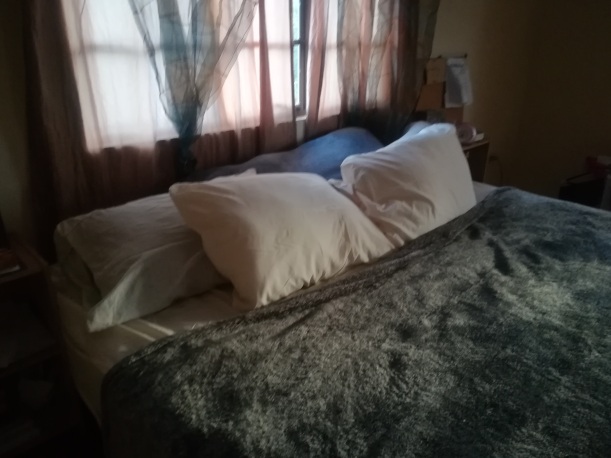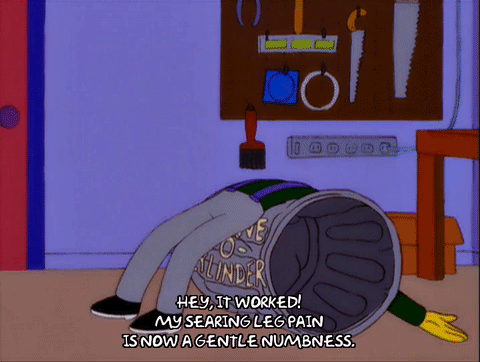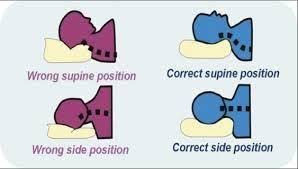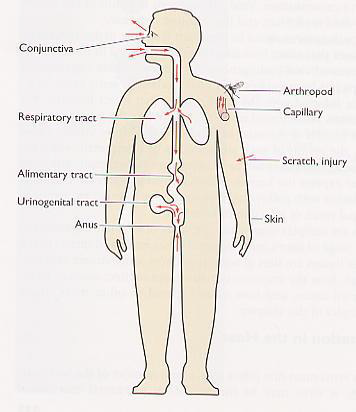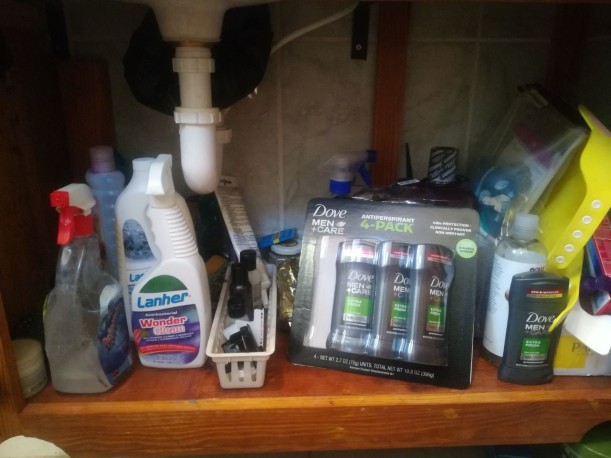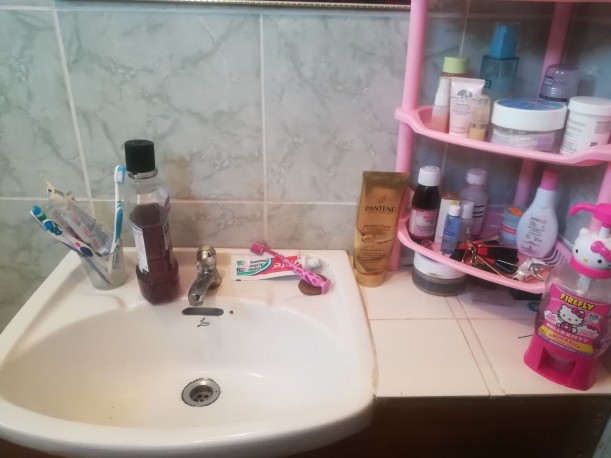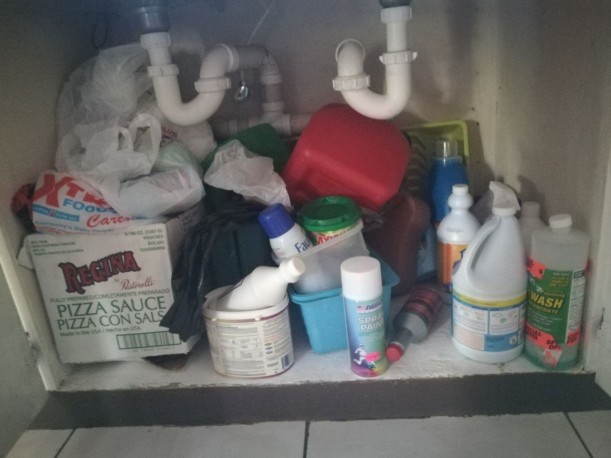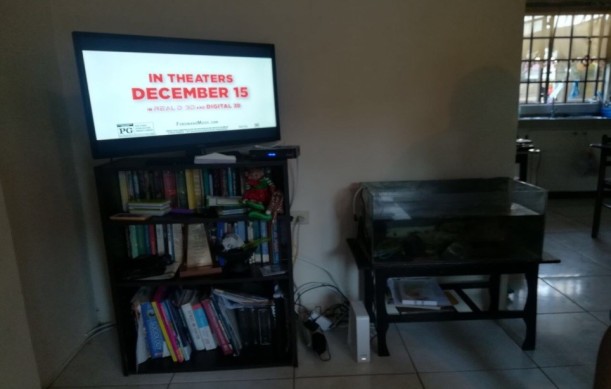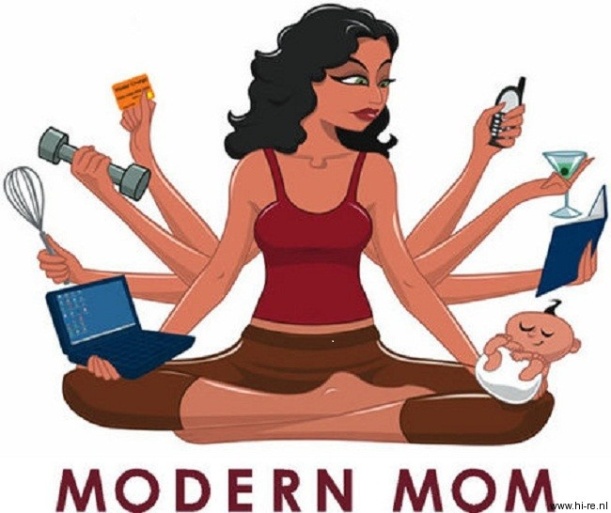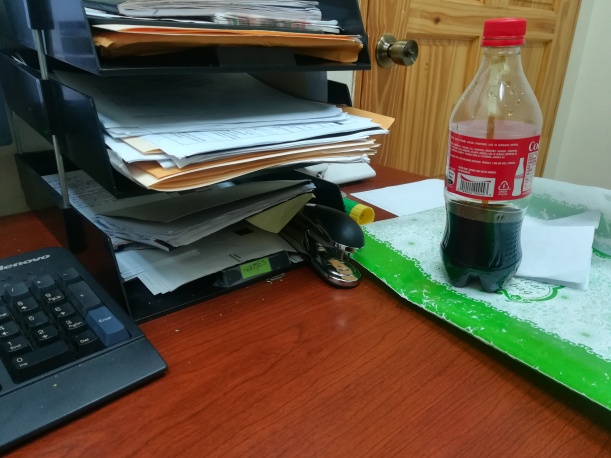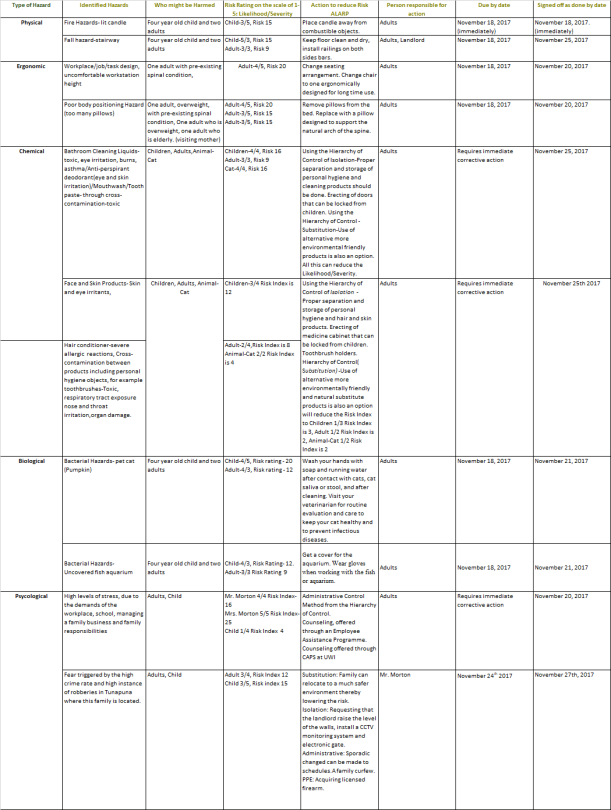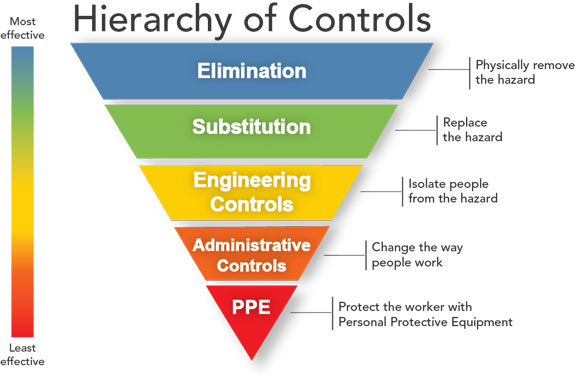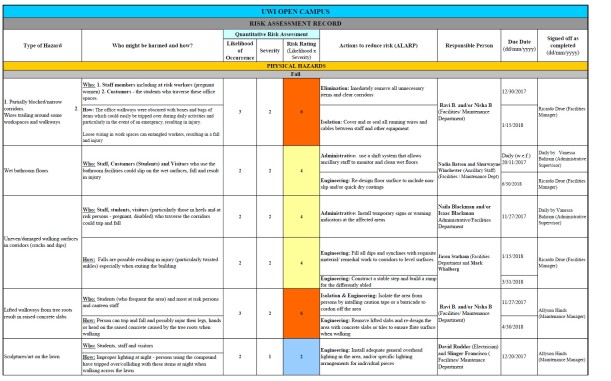
ROSS Helicopters Company Overview and History
ROSS Helicopters supports the Gas and Oil industry and operates from the Far East to the Americas. It is the second Largest Helicopter Company to that of the Canadian Helicopter Company. Ross Helicopters was founded in 1953 and was one of the earliest suppliers of offshore helicopter support in the UK, including Search and Rescue services to the UK government. ROSS also became an established Training Organisation, providing both Pilot and Engineering training to the Military and Civilian Industries. Regionally Ross Helicopters is the Largest Helicopter resource capability in T&T and the Region in terms of number of aircraft, pilots, engineers, infrastructure and overall competencies. Currently operates seven several aircraft types in Trinidad providing services for the Oil & Gas Sector. We currently Operate (2) Facilities for Maintenance & Engineering, Flight Planning and Operations Control as well as a Passenger Terminal with international airport level security (ICAO/IATA) and computerized passenger tracking system.
ROSS Helicopters complies with all requirements of international ‘Control of Substances Hazardous to Health (COSHH) Regulations, ICAO Safety Management Systems, IATA) Transport of Dangerous Goods regulations, the Trinidad and Tobago Occupational Health and Safety Act as well as their internal Health and Safety Global requirements
In the Helicopter operations there are many Hazards that require daily evaluations and the implementation of mitigation plans and controls. There are hazards associated with the process of operating an aircraft whether parked, rotor running or in flight.
 ‘HAZARDS’ & ‘RISK’: what do Hazards and Risk really mean?
‘HAZARDS’ & ‘RISK’: what do Hazards and Risk really mean?
The ICAO Safety Management Systems defines Hazards as “A condition, object or activity with the potential of causing injuries to personnel, damage to equipment or structures, loss of material, or reduction of ability to perform a prescribed function.”
Risks are disruptions resulting from the unpredictability of the future caused by accidental derogation possibilities of planned targets, expressed in terms of predicted probability and severity, of the consequence(s) of a hazard taking as reference the worst foreseeable situation. It takes into consideration the identified hazard and classifies it into two categories— “probability” and “severity”.
HIERARCHY OF CONTROLS – Why is it IMPORTANT to ROSS Helicopters?

According to the OSH requirements which states “ GENERAL DUTIES 6. (1) It shall be the duty of every employer to ensure, so far as is reasonably practicable, the safety, health and welfare at work of all his employees. In all cases, the employer to has a duty of due diligence and is responsible for ‘taking all reasonable precautions, under the particular circumstances, to prevent injuries or accidents in the workplace’. ROSS Helicopters complies these regulations and applies the ‘Hierarchy of Controls’ to ensure that all hazardous substances and processes are suitably and sufficiently assessed, for potential risk to health, in order to eliminate, control and protect the health of employees, contractors, visitors and the environment from adverse effects which may have immediate or chronic consequences.
In our visit to ROSS Helicopters and discussion with the HSE (Health Safety and Environment) Team we found that ROSS Helicopters has a very robust Risk Management system by which hazards are formally, systematically identified, assessed and mitigated. Nevertheless the 7 Wonders was appreciatively welcomed by ROSS Helicopters to work along with the HSE Team and take up the challenge of identifying hazards with the objective of producing ‘Hazards Assessments Reports’ that will identify who and how the hazards impact on the person affected, analyzing the Risk Likelihood and Severity, making recommendations for immediate actions to eliminate the hazard, and or identify mitigation controls, demonstrate how the implementation of these control reduces the risk and identify any residual risk (if any) for continuous improvement strategies. The diagram below illustrates our objective and approach.

SPOTTING HAZARDS
 The 7 Wonders Team, after dividing into (4) four sub-teams, we excitedly started our ‘Hazard Hunt’. On day one we came up empty handed, however we didn’t give up! As the operational work activities increased on day (2) two and day (3) three, we were no longer camera shy and our keen eyes for hazards went to work.
The 7 Wonders Team, after dividing into (4) four sub-teams, we excitedly started our ‘Hazard Hunt’. On day one we came up empty handed, however we didn’t give up! As the operational work activities increased on day (2) two and day (3) three, we were no longer camera shy and our keen eyes for hazards went to work.
Although it was not easy, finally we were able to identify Hazards in the following categories:
-
Chemical Hazards – Aircraft Refuelling, Paint Shop Fumes
-
Physical Hazards – Aircraft Noise and Wet Floors
-
Ergonomic Hazards – Working At Heights and Manual Handling
-
Physiological Hazards – Distractions and Working in Confined Spaces
1) CHEMICAL HAZARDS
A) HAZARD – AIRCRAFT FUELLING
 Hazard 1 Spotted: Chemical Explosion
Hazard 1 Spotted: Chemical Explosion
 The most commonly recognized hazard of refueling work is the jet fuel itself. Jet fuel is a flammable liquid and can be ignited given certain ambient conditions, primarily temperature and vapor concentration. Jet A and Jet A1, are types of Kerosene -type fuel. At Ross helicopters, the use of JET A1 fuel is used for fueling aircrafts. Jet fuel, is a flammable liquid, which can be ignited, given the certain ambient conditions, primarily temperature and vapour concentration. A hazardous vapour concentration, can be present, when the vapour level reaches a level of known as the lower flammability limit (LFL) or lower explosive limit (LEL). The temperature at which the vapors of a flammable liquid can ignite is known as the “flash point.” The risk associated with released fuel vapor from re-fueling, is that it can cause an unintended ignition of the fuel vapor, from a single spark. A sufficient amount of quantity associated with fuel vapor, has a very high risk of ignition, which may be as a result of from spillage arising from procedural errors, leaks, aircraft tank venting or failure of pressurized fuel lines or their couplings. If a explosion occurs all in close proximity will experience serious injury and even death.
The most commonly recognized hazard of refueling work is the jet fuel itself. Jet fuel is a flammable liquid and can be ignited given certain ambient conditions, primarily temperature and vapor concentration. Jet A and Jet A1, are types of Kerosene -type fuel. At Ross helicopters, the use of JET A1 fuel is used for fueling aircrafts. Jet fuel, is a flammable liquid, which can be ignited, given the certain ambient conditions, primarily temperature and vapour concentration. A hazardous vapour concentration, can be present, when the vapour level reaches a level of known as the lower flammability limit (LFL) or lower explosive limit (LEL). The temperature at which the vapors of a flammable liquid can ignite is known as the “flash point.” The risk associated with released fuel vapor from re-fueling, is that it can cause an unintended ignition of the fuel vapor, from a single spark. A sufficient amount of quantity associated with fuel vapor, has a very high risk of ignition, which may be as a result of from spillage arising from procedural errors, leaks, aircraft tank venting or failure of pressurized fuel lines or their couplings. If a explosion occurs all in close proximity will experience serious injury and even death.
Chemical Fumes:
 A hazardous vapor concentration is present when a fuel vapor reaches a level known as the lower flammability limit (LFL) or lower explosive limit (LEL). Jet fuel, may also present toxic or irritant hazards. At high concentrations, jet fuel and other hydrocarbons can affect the nervous system, causing headache, dizziness, and lack of coordination. During re-fuelling, refuellers may experience Short term (acute) symptoms, such as chemical burns, feeling unwell, signs of dizziness and can also be affected through, lungs damage, irritation of the skin, and eyes irritations. In some instances coma and death are prevalent. Additionally it can also be long term (chronic), such that it can be cancerous, can cause dermatitis on the skin, asthma and long term damage.
A hazardous vapor concentration is present when a fuel vapor reaches a level known as the lower flammability limit (LFL) or lower explosive limit (LEL). Jet fuel, may also present toxic or irritant hazards. At high concentrations, jet fuel and other hydrocarbons can affect the nervous system, causing headache, dizziness, and lack of coordination. During re-fuelling, refuellers may experience Short term (acute) symptoms, such as chemical burns, feeling unwell, signs of dizziness and can also be affected through, lungs damage, irritation of the skin, and eyes irritations. In some instances coma and death are prevalent. Additionally it can also be long term (chronic), such that it can be cancerous, can cause dermatitis on the skin, asthma and long term damage.
Build-up of static electricity during fuel delivery leading to ignition of fuel vapors.
 The flowing movement of flammable liquids like gasoline or kerosene inside a pipe can build up static electricity. Non-polar liquids such as gasoline and kerosene exhibit significant ability for charge accumulation and charge retention during high velocity flow. Electrostatic discharges can ignite the fuel vapor. When the electrostatic discharge energy is high enough, it can ignite a fuel vapor and air mixture. Different fuels have different flammable limits and require different levels of electrostatic discharge energy to ignite. The impact of static electricity on the human body, as according to scientist states, is that it causes Electrical Shocks. In most cases, however, the effects of static electricity on human beings have been considered harmful, or at least unwanted. In the age of the sick-building syndrome, it was almost unavoidable that some of the many unspecific effects of an imperfect indoor climate should be attributed to the exotic phenomenon of static electricity. Static charging has sometimes been the suspected cause of headaches, dry mucosa, itchy skin, and other similar ailments. Rarely in such cases has any possible mechanism or explanation been suggested that was based on well-documented studies. There is also plating out, which is one physical effect of static electricity that has some likelihood of causing physiological or hygienic problems: the effect an electric field around a person has on airborne particulates. Several scientific projects have demonstrated that electric fields around a person dramatically increase the plate-out rate of airborne particulates. It has been suggested that if such particulates are of an allergenic nature, the plate-out might result in an increased occurrence of skin irritation or disease. Such a relation, however, has not been demonstrated.
The flowing movement of flammable liquids like gasoline or kerosene inside a pipe can build up static electricity. Non-polar liquids such as gasoline and kerosene exhibit significant ability for charge accumulation and charge retention during high velocity flow. Electrostatic discharges can ignite the fuel vapor. When the electrostatic discharge energy is high enough, it can ignite a fuel vapor and air mixture. Different fuels have different flammable limits and require different levels of electrostatic discharge energy to ignite. The impact of static electricity on the human body, as according to scientist states, is that it causes Electrical Shocks. In most cases, however, the effects of static electricity on human beings have been considered harmful, or at least unwanted. In the age of the sick-building syndrome, it was almost unavoidable that some of the many unspecific effects of an imperfect indoor climate should be attributed to the exotic phenomenon of static electricity. Static charging has sometimes been the suspected cause of headaches, dry mucosa, itchy skin, and other similar ailments. Rarely in such cases has any possible mechanism or explanation been suggested that was based on well-documented studies. There is also plating out, which is one physical effect of static electricity that has some likelihood of causing physiological or hygienic problems: the effect an electric field around a person has on airborne particulates. Several scientific projects have demonstrated that electric fields around a person dramatically increase the plate-out rate of airborne particulates. It has been suggested that if such particulates are of an allergenic nature, the plate-out might result in an increased occurrence of skin irritation or disease. Such a relation, however, has not been demonstrated.
Chemical burns:
 Without the proper wearing of clothing, and proper use of equipment’s, some worker in the work environment, may be exposed to fuel oils contact to the skin. Some workers may be exposed to fuel oils through their skin if they come into contact with them without adequate protection, such as gloves, boots, coveralls, or other protective clothing.
Without the proper wearing of clothing, and proper use of equipment’s, some worker in the work environment, may be exposed to fuel oils contact to the skin. Some workers may be exposed to fuel oils through their skin if they come into contact with them without adequate protection, such as gloves, boots, coveralls, or other protective clothing.
Risk Assessment:
A quantitative or qualitative risk assessment was developed in relation to all the Chemical Hazards identified above. For every Hazard identify the 7 Wonders were able to share with the ROSS Helicopters HSE Team, that with the implementation of the Controls how the risk can be reduced from a Medium to Low Risk.


Recommendations and Control Measures
 Some possible mechanisms that can be used to eliminate the problem are, having Trained and competent person in attendance with fire extinguisher, ensuring adequate earthing and bonding during refueling operation, having Adequate PPE as per QID 195 Procedure 40, and Audits and Inspections both internally and externally. As such, it is mandatory that while refueling aircrafts, that aviation professionals, use a fire extinguisher, at all times and work in pairs, since from a single spark, can cause flames or explosion. Additionally, it is also mandatory that you do not use cell phones while fueling aircrafts, since it call also cause vapor fuel, to ignite.
Some possible mechanisms that can be used to eliminate the problem are, having Trained and competent person in attendance with fire extinguisher, ensuring adequate earthing and bonding during refueling operation, having Adequate PPE as per QID 195 Procedure 40, and Audits and Inspections both internally and externally. As such, it is mandatory that while refueling aircrafts, that aviation professionals, use a fire extinguisher, at all times and work in pairs, since from a single spark, can cause flames or explosion. Additionally, it is also mandatory that you do not use cell phones while fueling aircrafts, since it call also cause vapor fuel, to ignite.
Environment for Refueling:
Refueling in an open ramp area as illustrated in the video, can prevent the accumulation of fumes, this will facilitate the proper precautions for breathing. Refullers should not stand down wind where breathing hydrocarbon vapors, will cause sickness or dizziness, or may even be fatal to one’s health. Also in addition to high lead content, fuel should not be allowed to come into contact with skin, clothes or eyes.
Electrical Bonding:

Electrical bonding: To avoid static electricity from occurring through the transmission of fuel unto the aircraft, there must be a cable to link the designated points or to clean unpainted metal surfaces on the aircraft. The bonding cables are connected to the aircraft and the fuel delivery. These connections are made before filter caps are removed, prior to the start of fueling then not broken until fueling is complete and the filler caps have been replaced where applicable. On no account should either the fueling vehicle (including hydrant dispenser) or the aircraft be bonded to a fuel hydrant pit. It should be noted that Fuel Hoses, including so-called “conductive” hoses, are not suitable substitutes for dedicated clips and bonding wires.
Image illustrating the proper safety use of jet fuels, to avoid static dissaptor
 Persons affected from the build-up of static electricity, would be the employers themselves. Some precautions that can be used for when refueling the aircraft, is to (1) ensure that the aircraft is properly switched off, (2) ensure that the refueling hose is properly earthed, (3) ensure that the air craft I properly earthed, (4) ensure that the fueling nozzle is bonded to the aircraft before the refueling process begins, (5) remove earth bonding cable, only after detaching hose from aircraft. (6) Audits and inspections should be done both internally and externally.
Persons affected from the build-up of static electricity, would be the employers themselves. Some precautions that can be used for when refueling the aircraft, is to (1) ensure that the aircraft is properly switched off, (2) ensure that the refueling hose is properly earthed, (3) ensure that the air craft I properly earthed, (4) ensure that the fueling nozzle is bonded to the aircraft before the refueling process begins, (5) remove earth bonding cable, only after detaching hose from aircraft. (6) Audits and inspections should be done both internally and externally.
Personal Protective Equipment

In order to solve this problem, aviation professional, are to wear chemical gloves, wear proper eye protection, ensure regular laundering of work wear, wash hands after handling the use of all chemical, before eating and drinking, SDS available, ensuring Medical packs are available, including creams and washes for eyes and body, in the event of the fuel spillage, to help stop any possible reactions.
As such proper overall, covers should be worn, and if in an instance, fuel came into contact with your clothing, it should be removed as soon as possible and the parts of the body that came into contact with the fuel, should be properly washed thoroughly with soap and water. In the case if fuel enters the eyes, medical attention should be sought immediately.
FUMES HAZARD WHEN USING SOLVENTS or MIXING OF SOLVENTS
 The chemical hazards comes from Solvents/Painting sheet metal and Aircraft refuelling at Ross Helicopters. Chemical burns, chemical fumes are some ways in which an employee can be harm from chemical usage at Ross Helicopters workplace. There is a serious DANGER in mixing of solvents for the purpose of cleaning an aircraft or part. Every workplace has chemicals ranging from cleaning products to full scale chemical. At Ross Helicopters they use Aircraft Safety Solvent, it is a non-toxic substance developed to use for the aerospace industry, and it is a low unpredictability substitute for Methyl Ethyl Ketone (MEK), Trichloroethane, Toluene and blends of Methyl Ethyl Ketone and Toluene.
The chemical hazards comes from Solvents/Painting sheet metal and Aircraft refuelling at Ross Helicopters. Chemical burns, chemical fumes are some ways in which an employee can be harm from chemical usage at Ross Helicopters workplace. There is a serious DANGER in mixing of solvents for the purpose of cleaning an aircraft or part. Every workplace has chemicals ranging from cleaning products to full scale chemical. At Ross Helicopters they use Aircraft Safety Solvent, it is a non-toxic substance developed to use for the aerospace industry, and it is a low unpredictability substitute for Methyl Ethyl Ketone (MEK), Trichloroethane, Toluene and blends of Methyl Ethyl Ketone and Toluene.
B) Painting of Aircraft
 The second hazardous substance being used at Ross Helicopters, is the paint use to coat sheet metal. Paint has three components: resin as coating material, pigment for colour, and solvents to reduce the mix to a workable viscosity. Research, has shown that paint is a potentially hazardous product. It contains a variation of numerous hazardous chemicals, which can endanger human health, or the environment. In Painting aircrafts at Ross Helicopters, is said to have three components, which is resin as coating material, pigment for colour, and solvents to reduce the mix to a workable viscosity. However as HAZARD noted the employee using a dust mask while painting a sheet metal part, this can endanger their health, since as it was investigated that these paints and primers, can cause various forms of cancer when contacted with the skin, or respiratory diseases, when breathing in the vapour of this paint.
The second hazardous substance being used at Ross Helicopters, is the paint use to coat sheet metal. Paint has three components: resin as coating material, pigment for colour, and solvents to reduce the mix to a workable viscosity. Research, has shown that paint is a potentially hazardous product. It contains a variation of numerous hazardous chemicals, which can endanger human health, or the environment. In Painting aircrafts at Ross Helicopters, is said to have three components, which is resin as coating material, pigment for colour, and solvents to reduce the mix to a workable viscosity. However as HAZARD noted the employee using a dust mask while painting a sheet metal part, this can endanger their health, since as it was investigated that these paints and primers, can cause various forms of cancer when contacted with the skin, or respiratory diseases, when breathing in the vapour of this paint.
Risk Assessment:
A quantitative or qualitative risk assessment was developed in relation to all the Hazards identified above. For every Hazard identify the 7 Wonders were able to share with the ROSS Helicopters HSE Team, that with the implementation of the Controls how the risk can be reduced from a Medium to Low Risk.


Recommendations and Control Measures
Elimination: Using Personnel and Environment Friendly Solvents: The use of Aircraft Safety Solvent reduces risks of hazardous chemical spills, eliminates most hazardous waste disposal costs, and eliminates the health hazards associated with traditional solvents. Its formula is a representation of a major improvement in the Occupational Health and Safety standards as well as being recyclable and an environmentally safe solvent.
Reengineering:
 Spray painting is the most common and effective way to protect and remodel parts, products, vehicles, and buildings. At Ross Helicopters, spray painting allows for a large coverage of areas with coats of primer, paint, sealers, and other coatings.
Spray painting is the most common and effective way to protect and remodel parts, products, vehicles, and buildings. At Ross Helicopters, spray painting allows for a large coverage of areas with coats of primer, paint, sealers, and other coatings.
 Proper Labelling of Chemicals: The Trinidad and Tobago Occupational Safety and Health Act 2004 as amended 2006, Section 6 Subsection 3 (a), (b), (4), (5) & (6). Which states that, 3(a) “An employer shall ensure that all hazardous chemicals present in the industrial establishment are labelled in a way easily understandable to the employees or are identified in the prescribed manner.” It was suggested to ROSS Helicopters a bonded fireproof cabinet for the proper storage of chemical and to ensure that each solvent is properly labelled.
Proper Labelling of Chemicals: The Trinidad and Tobago Occupational Safety and Health Act 2004 as amended 2006, Section 6 Subsection 3 (a), (b), (4), (5) & (6). Which states that, 3(a) “An employer shall ensure that all hazardous chemicals present in the industrial establishment are labelled in a way easily understandable to the employees or are identified in the prescribed manner.” It was suggested to ROSS Helicopters a bonded fireproof cabinet for the proper storage of chemical and to ensure that each solvent is properly labelled.
MSDS Availability: The Trinidad and Tobago Occupational Safety and Health Act 2004 as amended 2006, Section 6 Subsection 3(b) stated that “An employer shall obtain or prepare as may be prescribed, an unexpired chemical safety data sheet for all hazardous chemicals present in the workplace.” According to the Trinidad and Tobago OSH Act 2006, Section 6, Subsection 4 reads, “An employer shall ensure that a hazardous chemical is not used, handled or stored in the industrial establishment unless the prescribed requirements concerning identification, chemical safety data sheets and workers instruction and training are met”, while Subsection 5 states that, “An employer shall advise the Chief Inspector in writing if the employer, after making reasonable efforts, is unable to obtain a label or chemical safety data sheet required by Subsection 3. Subsection(6) states that “A copy of the most recent version of the inventory and of every unexpired chemical safety data sheet required by this Part in respect of hazardous chemicals in a workplace shall be— (a) made available by the employer in such a manner as to allow examination by the employees; Before any Chemical is to be issued by the Stores Personnel, an MSDS is to be made available for the Mechanic or Technician to read and evaluate the risk before using the chemical. It should be the responsibility of the Stores Personnel to ensure that the MSDS are up-to-date at all times.
Proper Ventilation: Additionally, proper ventilation is important when working with paint coatings, having a Paint Workshop is an outstanding way to remove spray paint vapors and debris from a worker’s breathing zone. Many coatings contain flammable substances that are aerosolized when sprayed through powered equipment and without proper ventilation, such as in the Paint Workshop, these vapors can build up and create an explosion and fire danger. working with air powered tools.
 Personnel Protective Equipment: The air-purifying type of respirator should be used only during exposure to those specific chemicals, or groups of chemicals, described on the respirator cartridge. These containers are useable only for a limited time and must be replaced with new ones when the smell of vapors enters the mask, they become difficult to breathe through, or they have been used for their specific lifetime. The atmosphere-supplying type of respirator must be used in some paint spraying operations, particularly with urethane paints or when painting in a confined. Whichever respirator is used, it must fit properly to ensure acceptable protection. Respirator maintenance and cleaning is important. All employees at Ross Helicopter should keep your respirator in good condition by cleaning and sanitizing it regularly, since no one wants to use a dirty, leaky respirator which has been worn previously by someone else. Also these equipment should be stored it in a clean place. They the employees of Ross Helicopters are advice to check their gears often for pliability and signs of deterioration before wore. If the respirator needs repair, use only the manufacturer’s recommended replacement parts. With a little thought, and a small amount of effort, your respirator will protect you for a long time.
Personnel Protective Equipment: The air-purifying type of respirator should be used only during exposure to those specific chemicals, or groups of chemicals, described on the respirator cartridge. These containers are useable only for a limited time and must be replaced with new ones when the smell of vapors enters the mask, they become difficult to breathe through, or they have been used for their specific lifetime. The atmosphere-supplying type of respirator must be used in some paint spraying operations, particularly with urethane paints or when painting in a confined. Whichever respirator is used, it must fit properly to ensure acceptable protection. Respirator maintenance and cleaning is important. All employees at Ross Helicopter should keep your respirator in good condition by cleaning and sanitizing it regularly, since no one wants to use a dirty, leaky respirator which has been worn previously by someone else. Also these equipment should be stored it in a clean place. They the employees of Ross Helicopters are advice to check their gears often for pliability and signs of deterioration before wore. If the respirator needs repair, use only the manufacturer’s recommended replacement parts. With a little thought, and a small amount of effort, your respirator will protect you for a long time.
Residual Risk:
Leakage in mask or the lack of use of mask- causing respiratory problems
As a result to provide maximum protection, the Paint Workshop is properly maintained, including regular cleaning of the system air filters and overspray of the air compressors, coating tucks, spray guns. In order to prevent sparking a flammable substance, smoking and other sources of flame near spray painting operations should be prohibited and tools should be properly rated and grounded for work in a spray painting area. Due to much of the equipment used for spray painting and surface preparation uses compressed air at Ross Helicopters, workers should be aware that noise can be a risk, so should wear hearing protection when in close proximity of the areas affected paint fumes.
2) Physical Hazards
A) WET FLOORS – SLIPPING HAZARDS

According to Canadian Center for Occupation Health and Safety, “physical hazards are defined as substances or activities that threaten your physical safety. They are the most common and are present in most workplaces at one time or another. These include unsafe conditions that can cause injury, illness and death”. Physical hazards are not always something that you can see or touch.
A slipping hazard refers to a situation in which there is too little friction to permit a walking person to stay upright. The hazard is usually related to smooth and even surfaces. It can be increased by ice, water or other liquid on the surface, and the inclination of the surface. The quality of the footwear and the method of moving also affect safety.

RISK ASSESSMENT
 This risk can be classified as medium priority in the work place as it is very likely that a person will trip on wet floors especially tiled ones and unfortunately most work places has tiled floors like Ross Helicopters. The severity depends on the individual but most of the times a sprained ankle or damage to one’s foot can occur. After the controls are put in place, the risk of wet floors will drop to low as it then decreases the likelihood and severity of someone slipping on wet floors. At Ross Helicopter, Slip hazards are present in the work place as cleaning of the floors are part of the custodian’s daily routine. Wet floors in the bathroom is also a risk to employees because when someone washes their hands, sometimes water falls to the ground and then employees will be exposed to the slip hazard. Wet floors can be deemed a hazard to the employees and also visitors to the compound. Footwear can also determine the extent of the injury, women that wear shoes with heels, pregnant women and elder persons are at the highest risk because they will be more prone to bodily injuries such as twisting their ankles, falling and damaging their spine and can result in pregnant women having a miscarriage. According to HSP Supply Inc, “Workers’ Compensation boards reported 32,337 time-loss injuries in 2001. Slips are the third largest category for time-loss injuries, and a significant number are slip-falls.”
This risk can be classified as medium priority in the work place as it is very likely that a person will trip on wet floors especially tiled ones and unfortunately most work places has tiled floors like Ross Helicopters. The severity depends on the individual but most of the times a sprained ankle or damage to one’s foot can occur. After the controls are put in place, the risk of wet floors will drop to low as it then decreases the likelihood and severity of someone slipping on wet floors. At Ross Helicopter, Slip hazards are present in the work place as cleaning of the floors are part of the custodian’s daily routine. Wet floors in the bathroom is also a risk to employees because when someone washes their hands, sometimes water falls to the ground and then employees will be exposed to the slip hazard. Wet floors can be deemed a hazard to the employees and also visitors to the compound. Footwear can also determine the extent of the injury, women that wear shoes with heels, pregnant women and elder persons are at the highest risk because they will be more prone to bodily injuries such as twisting their ankles, falling and damaging their spine and can result in pregnant women having a miscarriage. According to HSP Supply Inc, “Workers’ Compensation boards reported 32,337 time-loss injuries in 2001. Slips are the third largest category for time-loss injuries, and a significant number are slip-falls.”


Even though this risk is seen as medium, it should be taken seriously because if it isn’t, the company can be held responsible and may face many legal challenges no matter how little and will be required to compensate the employee. (4) An occupier shall ensure, as far as is reasonably practicable, that no unsafe structure exists in the industrial establishment that is likely to expose persons to risks to bodily injury.”
In section 46A states “Where an accident causes injury to a person at a workplace whereby the person is unable to perform his usual work or requires medical attention, and such occurrence does not cause death or critical injury leading to disability, the employer shall give notice in the prescribed form within four days of the occurrence, to the Chief Inspector, containing information and particulars of the accidents.
Recommendations and Control Measures
The hierarchy of controls were used to reduce or eliminate the risk of wet floors in the workplace. Risk can be reduced by keeping walkways, working surfaces and steps in good condition. In order words,
Elimination: We can eliminate risk by simply mopping the floors as soon as a spill happens, mopping the floor after/ before work hours so that during the day when most staff is present, it does not need to be done and if it is necessary to mop during the work hours, a fan or something of the sort should be implement so it can dry the floors quickly to reduce the number of persons having to walk on the wet floor.
Substitution: If elimination is impossible we then move on to substitution, since this particular control cannot be applied to this risk, we move on to the other which is to isolate.
Isolate: To isolate wet floors we will simply ask workers to use a different route to get to their destination instead of the route where there are wet floors. If this is impossible which will be very rare as most of the times there will be a number of routes that can be taken to get to your work station, we will now go to the engineering level in the Hierarchy of controls.
Administration: Employees should be trained to report spills and wet floors in the workplace. Employees should pay attention to where they walk and the surrounding areas. Have Safety officers inspect the organization frequency and make staff aware of hazards and the type of impact it can have on them because little things are often overlooked.
The hierarchy of controls which starts from elimination, substitution, isolation, engineering, administration and finally PPE were used to find ways to decrease the risk of slips from 2D being a medium risk to now 1B being a low risk.
B) NOISE HAZARD
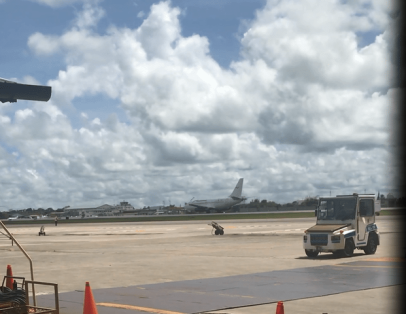
Just Imagine… if an aircraft runway was close proximity to your house and several 737 aircraft and Bell 412 helicopters landed all day and night. What would be your reaction to the noise? That’s exactly what the employees at ROSS Helicopters experience everyday!
Exposure to high noise levels caused by running aircrafts can cause hearing impairment and/or repeated exposure can cause permanent hearing loss that cannot be corrected by surgery or a hearing aid. Short-term exposure to loud noise can cause a temporary change in hearing frequency.
Apart from short term and long term effects, noise hazards can also:
- Create physical and psychological stress
- Reduce productivity
- Interfere with communication and concentration
- Contribute to workplace accidents and injuries by making it difficult to hear warning signals.
The Bureau of Labor Statistics (BLS) has reported that since 2004 nearly 125,000 workers have suffered significant, permanent hearing loss. In 2009 alone the BLS reported there were more than 21,000 cases of hearing loss. Twenty-two million workers are exposed to potentially damaging noise at work each year according to the United States Department of Labour. Last year it was stated, U.S. business paid more than $1.5 million in penalties for not protecting workers from noise which shows clearly this is a prominent risk factor in the workplace that continues to be a hazard. (Cited on Design Products “Workplace Noise Hazards”, BLS, USD of Labour).
RISK ASSESSMENT
Noise-related hazard is another type of physical hazard that can cause hearing loss which is one of the most common health issues. Risk assessment is geared towards minimizing the risk of injury inclined by exposure to noise when working close to running aircrafts and other environmental noises. Following the procedures will limit the risk and adverse effects to hearing. All personnel working on aircraft can be exposed and the problems may not be limited to operations outside the hangar.


After performing the risk assessment for noise hazard, it shows medium risk levels however it is Ross Helicopter’s duty to ensure the safety of engineers in accordance with the OSH Act. The emphasis of the Occupational Safety and Health Act 2004 as amended (2006) is on the assessment of risks due to noise exposure and implementation of controls to minimize those risks. Section 34 (1-2) speaks that, (1) Every owner, occupier or employer shall take adequate steps to prevent hearing impairment caused by noise, and diseases caused by vibration, from occurring to persons in, or in the vicinity of, his industrial establishment and shall comply with such directives as—(a) the Chief Inspector may issue an order to reduce the level of noise or vibration generated by a machine, device or process;.
Recommendations and Control Measures

- ‘If I was wearing my ‘what’?!’
The hierarchy of controls are possible measure can be implemented although may be limited in scope but what is needed to reduce risk in noise exposure to the lowest level possible could include:
- We cannot eliminate the risk completely however we can reduce the noise impact through technical measures i.e. provide aviation helmets that include hearing protection and communication systems to enable staff to communicate through helmets/ ear defenders to warn each other of potential threats or danger.
- Substitute controls cannot be applied to Ross Helicopters because it is an environment where it is mandatory for engineering staff to comply with instructions as a protection measure to reduce risk attached to noise exposure. There are special PPE to be used that as it relates to aircraft noise.
- In terms of isolation control, unauthorized personnel should not be allowed as they are more susceptible of being at risk due to the lack the knowledge and training on the health and safety requirements when exposed to a nosey environment. Ross Helicopters can isolate the aircraft noise in one specific location to avoid distraction or irritation to other functional departments.
- Engineering controls of hierarchy should install warning signs in strategic locations, visible and clear to the public as well as to have supervisors to monitor the adherence of cautionary measures to prevent or reduce risks.
5. Administration must ensure policies, procedures and work practices are implemented and that training is available to staff to sensitize and bring awareness about the risk involved from poor health and safety practice. PPE is to be provided for its staff to help minimise the risk involved working in an aircraft noisy environment.
In the aviation industry, noise problems are significant; to control the hazards the following can be applied where feasible:
- Identification of where there is a risk from noise and who is likely to be affected.
- Measuring and assessing the levels of noise personnel are exposed to and comparing the exposure with the exposure action values and limit values.
- Tackling any immediate risk; for example, by providing hearing protection.
- Identify measures to control noise exposure at source, how much reduction could be achieved, and what is reasonably practicable.
- Use a different process that is quieter or quieter equipment if this is feasible.
- Enforce the low noise purchasing policy for new machinery and equipment.
- Modify the path between the noise source and the exposed personnel; for example, by providing quiet rooms and acoustic barriers.
- Design and lay out the workplace to ensure low noise emission.
- Limit the time spent by employees in noisy areas.
- Make sure the legal limits on noise exposure are not exceeded;
- Provide your employees with information, instruction and training;
- Identify any employees who need to be provided with health surveillance and whether any are at particular risk.
- As a last resort, and if noise cannot be controlled adequately by engineering measures, issue appropriate hearing protection ensure the hearing protection will:
Managing noise risk diagram
The steps of control in the workplace and adapting good practice standards will make working a safe and healthy environment which will stimulate motivation and increased performance, higher productivity while preserving one’s health. To accomplish this requires a comprehensive safety and health management system where constant monitoring and enhancement is needed that will ultimately increase coverage for safety. In application of the after controls noise hazards moved from 3C “medium” risk to a 1B low risk.
3) Ergonomic Hazards
A) Working At Heights

Can you spot the Hazard Here? If you guessed “Falling from Heights” you are absolutely correct. In 2007/08 falls from height accounted for 58 fatal accidents at work and around 3235 major injuries. They remain the single biggest cause of workplace deaths and one of the main causes of major injury.
ROSS Helicopters statistics for 2007 & 2008 are: eleven work at height / movement through height injuries, two of which were LWC’s (lost work cases) with one MTC (medical treatment case) and eight FAC’s (first aid cases)
Maintenance of an aircraft requires access to height and there is a need for a Mechanic or Engineer to have access to the top areas of the aircraft to perform maintenance task. When performing minor inspection it is often the norm to use the aircraft inbuilt access steps to climb on to the aircraft as indicated in the picture above. However lets refer to the Hazards and Risk Assessments tool above in identifying this activity if has the potential to cause harm to the Engineer or Mechanic as we evaluate the risk involved.
What Makes Working at Heights Hazardous?
There are several factors that make Working at heights hazardous, and increase the risk of injury. Falls from working at heights can result in Fatalities, Serious Injury that can lead to permanent disability or paralysis and or multiple fractures. Falling objects from height can also cause severe injuries that may result in brain damage, paralysis or multiple fractures.
RISK ASSESSMENT


Factors that contribute to the increased Risk of Falling at Heights:
Distance of fall: The distance from the Top of the helicopter the floor is approximately 4.98 m (16ft. 4 inches). A person and or object can fall and will have a direct bearing on the severity of injury or damage it can cause.
Deterioration of Materials: If the aircraft step uplift is being used to access the top of the helicopter the structure and condition should be sound as materials deteriorate over time, particularly when exposed to the effects of sea blast and corrosion.
Unprotected Edges: Where the edges of surfaces on which people are working are open, the risk of falls or falling objects is greatly increased.
Weather: The weather can increase the risk associated with working at heights: Working in excessive rain can increase the risk associated with working at height. High winds can make workings stands and access equipment unstable, blow loose materials off (and in extreme conditions workers).
Falling Materials: Objects falling from a height are capable of causing considerable damage to both people and other materials that they hit. The loose materials may be tools, loose aircraft parts removed due to incorrect methods to getting material down to the ground working area.
Recommendations and Control Measures
Elimination: Working at Height is unavoidable when working in the aviation industry, as many maintenance task and inspections requires the Mechanic and Engineers to work at heights. However when working at heights careful planning. Prior to working at height a full risk assessment must be carried out to determine the risk, not only with regard to the task in hand but also having regard for the weather, the location and any other environmental issues present that may increase the risk of falling.

Engineering: Scaffold Towers, work stands and platforms provided should always be used to gain access to top of the helicopter to perform inspections and maintenance work. Guard Railings must be placed during the time the platforms are in use. Towers are only to be used on a firm level base, with wheel casters locked. The structure is to be braced in all planes, to distribute loads correctly, to prevent twisting and collapse.
The ratio of the minimum base dimension to the height of the working platform must not exceed 1:3 when used outside and 1:3.5 for internal use, unless the tower is tied (secured) to another permanent structure at all times. Base ratios can be increased by the use of outriggers, these are to be fully extended and capable of taking loads at all times. Free standing towers must not exceed 9.00 metres high to the working platform unless tied. The maximum height to the upper working platform when tied must not exceed 12 metres. For minor inspections where only visual check are required can the aircraft structural steps or built-in work platforms, can be acceptable for use, if the aircraft is outside or on the ramp.
Administration: Base Management must ensure personnel, contractors and subcontractors are trained and competent as follows when moving through height and working at height:
- Correct and appropriate use of access equipment
- Work at height training
- Movement through height training
- Use of head protection
- Competency maintained via continuation training
- Base management must also ensure that training is updated on an annual basis for all personnel.
Use of Personal Protective Equipment: All employees, contractors etc. when using work stands, platforms and towers MUST be wearing approved head protection. The head protection must be inspected before use, in place before moving from the ground, adjusted to the wearer, securely fastened during use, worn by both engineers and pilots, or other persons gaining height on the aircraft, must not be removed during checks on the aircraft and must not be removed until back on the ground.
Use Proper Equipment: The type of equipment workers require to work at height varies based on the type of job they are attempting to do. For example, ladders should only be used for short-term jobs and workers should not use this equipment if they are going to be remaining at height for a significant period of time.
All equipment should be checked regularly for signs of wear or other problems. This is especially important if workers rent equipment for the purpose of completing a particular job. Rented equipment may not always be of the highest quality due to how many others have used it.
Residual Risk:
Unstable or Poorly Maintained Access Equipment: Working stands and access equipment must be maintained, inspected on a regularly bases to ensure that it is structurally secure to be used by the mechanics.
Poor Positioning of Working Stands – Any access equipment if not positioned correctly and locked and cause a mechanic to over reach when doing aircraft task or fittings, or the working stands can shift in positioning which can cause a catastrophic collapse or topple.
Work Stands Railings & Steps: Employees not using Work stand Railings and non-skid strips not applied to steps. Control: “Use hand railings” signs should be place on the work stands as well as non-skid tape be included on steps.
Finally the responsibility to ensure protection for personnel working at height is with the base management, delegated to nominated and competent supervisors within the operation. All tasks undertaken within the base where access to height is required must be evaluated by risk assessment.
B) MANUAL HANDLING OPERATIONS
 Lifting….. It’s not complicated, is it? You pick something up and put in back down again. Most of us have been doing it since we were a few months old. Yet incredibly, according to the Fourth European Working Conditions Survey carried out in the EU-27 in 2005, 35% of all workers are exposed to the risk of carrying or moving heavy loads for at least a quarter of their working time. So what’s going wrong?
Lifting….. It’s not complicated, is it? You pick something up and put in back down again. Most of us have been doing it since we were a few months old. Yet incredibly, according to the Fourth European Working Conditions Survey carried out in the EU-27 in 2005, 35% of all workers are exposed to the risk of carrying or moving heavy loads for at least a quarter of their working time. So what’s going wrong?
Manual handling is a part of everyday life, we all have to lift things and none of us want to suffer from muscular injuries. Not only that, in accordance with the OSH Chap. 88:08 Part II – General Duties 6. (1) “It shall be the duty of every employer to ensure, so far as is reasonably practicable, the safety health and welfare at work of all his employees”. As an employer ROSS Helicopters has a duty to ensure that the manual handling tasks carried out on our premises are done in a safe manner.
It’s important to understand what we mean by “manual handling”. The legal definition in accordance with Management of Health and Safety at Work Regulations is: “any transportation or supporting of a load (including the lifting, putting down, pushing, and pulling, carrying or moving) by hand or by bodily force”. At Ross Helicopters Manual Handling takes place in almost all working environment however it especially common in the areas of Freight and baggage handling, Workshops, Warehouse / stores, Engineering hangars, Offices / administration areas and the Battery shop.
RISK ASSESSMENT



Factors that Contribute to the Increased Risk of Manual Handling?
There are several factors that make manual handling hazardous, and increase the risk of injury. These are called risk factors. The risk factors, particularly for back injury, are related to 4 aspects of manual handling: the load, the task, the environment and the individual.
The Load:
The risk of back injury increases during lifting, carrying, pushing and pulling of loads, if the load is:
Too heavy: There is no exact weight limit for manual handling. A weight of 20 to 25 kg is heavy to lift for most people, especially if the load is handled several times in an hour. Note that pushing or pulling often imposes less loading on the body than lifting or carrying.
Too large: One basic rule for lifting and carrying is to keep the load as close to the body as possible. In order to get a broad load close to the body, the worker has to open the arms to reach and hold the load. The arm muscles cannot produce force when reaching as effectively as with the arms held in close. Thus, the muscles will get tired more rapidly when handling a large bulky load.
Difficult to grasp: Loads that are difficult to grasp can result in the object slipping, causing sudden movement of the load. Gloves usually make grasping more difficult than with bare hands. Providing the objects with handles or using aids for gripping (e.g. when carrying plate material) reduces the load on the worker. Loads with sharp edges or of dangerous materials (solids or liquids) can injure workers, especially in the event of a collision.
Unbalanced: Unstable or if the contents can move: With unbalanced objects, it is difficult to hold the centre of gravity of the load close to the middle of the body. This leads to uneven loading of muscles, and fatigue. Unstable or moving content, such as a liquid, causes uneven loading of the muscles and sudden movements of the load can make workers lose their balance and fall.
Difficult to reach: Loads that can only be reached with outstretched arms, or by bending or twisting the trunk, require more muscular force. The spine may easily be hurt if the trunk is bent or twisted while lifting.
The Task:

The risk of back injury increases if the task:
Is too strenuous: Tasks may be very demanding if they have to be carried out too frequently or for too long with insufficient rest or recovery time (e.g. continuous lifting or carrying for long distances, or activities where the working speed is imposed by a process which cannot be altered by the worker).
• Involves awkward postures or movements: Working with a bent and/or twisted trunk, raised arms, bent wrists, a bent neck and turned head increases the risk of back injury and should be avoided, as should twisting, turning and bending movements of the trunk, overreaching, sudden movements and repetitive handling.
The Environment:
 The following characteristics of the work environment may increase the risk of back injury:
The following characteristics of the work environment may increase the risk of back injury:
• Space available: A lack of space to carry out manual handling may lead to inappropriate body postures and dangerous imbalance in the loads.
• Floor: Handling loads on different working levels or on floors that are slippery, uneven or unstable (such as working platforms or fishing boats) may increase the risk of accidents and back injury.
• Climate: The physical climate (temperature, humidity and ventilation) may affect the risk of back injury. Heat makes you feel tired, and sweat makes it hard to hold tools, requiring more force. Cold can make your hands numb, making it hard to grip.
• Lighting: Insufficient lighting may increase the risk of accidents when handling loads. It may also make you work in awkward positions to see clearly what you are doing.
The Individual:
 There are also some individual factors that can influence the risk of back injury:
There are also some individual factors that can influence the risk of back injury:
• Experience, training and familiarity with the job (for example, new episodes of low back pain are common in the first year of employment) 8
• Age (the risk of low back disorders increases with the number of years at work: the first episode of low back pain occurs in most people by the age of 30) According to the OSH Chap. 88:08 PART 1—REQUIREMENTS HEALTH7. Lifting Excessive Weights—a young person shall not be employed to lift, carry or move any load so heavy as to be likely to cause injury to him.
• Physical dimensions and capacity (length, weight, strength, etc.)
• Personal lifestyle (smoking may, for example, increase the risk of low back disorders)
• History of back disorders (this is a predictor of future back injuries)
• Willingness to use personal protective equipment (for example, clothing and footwear).
Types of Injury Caused by Manual Handling:
 While taking into consideration all the important factors mentioned above, there are many other factors that can create a risk of injury, for example the number of times an Aircraft Handler has to pick up or carry an bagging and freight every flight, the distance its being carried, where its picked it up from or putting it down (picking it up from the floor, putting it on a shelf above shoulder level) and any twisting, bending, stretching or other awkward posture you may adopt while doing the task. The term ‘musculoskeletal disorders’ covers any injury, damage or disorder of the joints or other tissues in the upper/lower limbs or the back. Statistics from the Labour Force Survey (LFS) indicate that MSD cases, including those caused by manual handling, account for more than a third of all work-related illnesses reported each year to the enforcing authorities.
While taking into consideration all the important factors mentioned above, there are many other factors that can create a risk of injury, for example the number of times an Aircraft Handler has to pick up or carry an bagging and freight every flight, the distance its being carried, where its picked it up from or putting it down (picking it up from the floor, putting it on a shelf above shoulder level) and any twisting, bending, stretching or other awkward posture you may adopt while doing the task. The term ‘musculoskeletal disorders’ covers any injury, damage or disorder of the joints or other tissues in the upper/lower limbs or the back. Statistics from the Labour Force Survey (LFS) indicate that MSD cases, including those caused by manual handling, account for more than a third of all work-related illnesses reported each year to the enforcing authorities.
The 2016/17 statistics show that 38% of Musculoskeletal disorders were affected in the ‘Back” area. At Ross Helicopters in 2016/2017 there were (4) four cases of back injury due to the lifting of heavy objects and continuous lifting of baggage and pushing and pulling trolleys.
Recommendations and Control Measures –
Manual Handling Techniques
The negative health effects of manual handling can be prevented by trying to eliminate or at least reduce the risk factors involved. The following hierarchy of prevention measures should be used:

Elimination
First, can the work be designed and organised in such a way that manual handling can be avoided completely, or at least restricted (e.g. using powered or mechanical handling equipment such as conveyor belts, lift trucks, electric hoists or gravity-inclined roller track)
Technical Measures
If manual handling cannot be avoided,automation, mechanisation and the use of lifting and transport equipment should be considered (e.g. conveyors, hoists, cranes, vacuum lifting devices, lift tables, pallet trucks, lift trucks, barrows, trolleys). However, attention should be paid to ensure that new work risks are not created (e.g. through noise, or hand-arm vibration).
Organisational Measures
Organisational or administrative measures should only be considered if elimination of manual handling is not possible, and if technical measures are not effective in reducing the risks involved in manual handling. Heavy or frequent manual handling tasks should be carried out by several people or, if possible, the amount that is handled should be reduced or the load split into smaller ones. The rate of manual handling should not be set by a machine, supervisor or colleagues. The time taken to carry out manual handling tasks should be extended by taking breaks, or by alternating them with other tasks so that the muscles have time to recover.
Provide information and training to workers
If workers have to carry out manual handling activities, they should be informed of the risks of accidents and ill health, particularly concerning their specific tasks. They should also receive training on the use of equipment and on correct handling techniques (see below).
Correct handling techniques:

 Lifting
Lifting
You should adopt the following technique when lifting the load:
• Put your feet around the load and your body over it (if this is not feasible, try to keep your body as close possible to the load and in front of it)
• Use the muscles of your legs when lifting
• Keep your back straight
• Pull the load as close as possible to your body
• Lift and carry the load with straight arms.
4) Psychological Hazard.
A) Distractions

A psychological Hazard is any hazard that affects the mental well-being or mental health of a worker by overwhelming individual coping mechanisms and impacting the workers ability to work in a healthy and safe manner. Psychological hazard can cause stress and stress is one of the psychological hazard. Industrial Job that has a lot of tasks, roles and work demand and if there were lack of organisation leadership employee can face psychological hazards at their workplace.
The picture shows an image of an aircraft mechanical staff doing the pre-flight check-up on an operation day. While doing that, he also had a mobile phone over his shoulder and was having a conversation. Aircrafts engineers used to work longer hours, some of them had to work overtime to wait for all aircrafts into the hanger for check-ups and get prepared for another day. A phone call during working work hours especially when involving tasks that are very much on mechanical work can is identified as a “distraction Hazard”. This job is demanding and need certain responsibility to proper finish all check-up carefully because the risk to it may cause the livelihood of other people. As assessed, this phone call might be of work-family conflict, or there must have been an increasing responsibility on the job, this person is working alone, he could have had difficult co-worker to deal with, or a challenging manager. Overall, it was identified as a psychological hazard.
Working in a helicopter firm is a very demanding because of the nature if it’s environment where you deal with things that needs your full attention and right decision-making while being at work or while handling with aircrafts. Psychological hazard can lead to occupational hazards and there are some occupational diseases that impacts health. According to Mrs Marcia (2017), Psychological factors (e.g. stress from conflict job overload, boredom, uncertainty, lack of control, fear, bullying) are the causes of psychological hazards and it was further confirmed through the OSH Acts.
RISK ASSESSMENT


Higher risk of violence may occur to Helicopter service staff as a transportation industry. If distraction hazard is not measured and managed properly, it can lead to serious problem. People who work in a transportation industry like airlines and helicopter services may understand the long working hours, job demand through increasing responsibility, tight and frequent rescheduling of schedules, challenging manager, these demands the full concentration of an employee.
According to the Trinidad and Tobago OSHA 25A (2015) states “in an industrial establishment every (a) Prime mover, (b) Part of a transmission machinery; (c) Dangerous part of a machine, shall be effectively safeguarded in accordance with sects 25 B, 25C and 25D, this can also be applied to the machinery that were used by helicopter services. Employees must be very careful when dealing with machines that can cause harm to another person who will be using it next.
Recommendations and Control Measures
 According to the Osh act, Hazard information which includes safety procedure and information, use of signs manuals must be present and accessible for employees to abide by in the work place, for example, restrictions to the use of mobile works while servicing the aircraft, this can help employees being reminded regularly to adhere to the rules and regulation in way that they can be safe guarded from psychological hazard and be more focused. Eliminate the use of PHONES on the Hangar Floor where work is conducted.
According to the Osh act, Hazard information which includes safety procedure and information, use of signs manuals must be present and accessible for employees to abide by in the work place, for example, restrictions to the use of mobile works while servicing the aircraft, this can help employees being reminded regularly to adhere to the rules and regulation in way that they can be safe guarded from psychological hazard and be more focused. Eliminate the use of PHONES on the Hangar Floor where work is conducted.
B) CONFINED SPACES
 What are confined spaces?
What are confined spaces?
Ventilation hoses provide air and exhaust toxic vapors during confined space entry. A guardrail would also be necessary to protect workers from potential falls.
OSHA uses the term “permit-required confined space” (permit space) to describe a confined space that has one or more of the following characteristics: contains or has the potential to contain a hazardous atmosphere; contains material that has the potential to engulf an entrant; has walls that converge inward or floors that slope downward and taper into a smaller area which could trap or asphyxiate an entrant; or contains any other recognized safety or health hazard, such as unguarded machinery, exposed live wires, or heat stress.
At Ross Helicopters, the hazard involves workers entering the helicopter’s restricted areas for repairs. Operating in these cramped areas over a lengthy period of time can be mentally taxing for repair workers, especially those who may have issues with claustrophobia and panic attacks. In the event of a mental breakdown, further harm can befall onto the worker as well as the equipment and resulting in overall damage to the aircraft.
RISK ASSESSMENT


Recommendations and Control Measures
There are many ways in which the psychological hazard of confined spaces can be mitigated. Firstly, workers should be put on a shift system, where each is allowed to work for an hour until the other swaps in. The constant rotation of workers will reduce the long period in the confined spaces making them much more bearable. Also by having the close supervision of another employee during the helicopter’s servicing, in the event of a “worker meltdown”, emergency protocols can be carried out quickly.
Understanding what these issues are will help you overcome intangible fears and frustrations while on work place and can keep you focused and avoid distraction at work place, for Psychosocial hazards include but aren’t limited to stress, violence and other workplace stressors.
CONCLUSION
The Hazards identified at ROSS Helicopters was discussed with the HSE TEAM. Most of Controls recommended for implementation by the 7 Wonders were immediately actioned by ROSS Helicopters Management Team. During the debrief it was recommended that ROSS Helicopters use in the flow below when managing their Noise Risk which is a Major Hazard that is affected by all employees.

The 7 Wonders also discussed the introduction of the ‘The Entropy Model’ that offers organizations with a planned method to handling risk in the short and longer term. They even adopted our template used for the Risk Assessment evaluation. The procedure, referred to as the Four-Fold Strategy, addresses entropic and outstanding risks using a multidisciplinary approach. It involves:
- Taking immediate corrective action to eliminate entropic risk;
- Establishing maintenance strategies to prevent future entropic risk;
- Managing residual risk in the short term
- Minimizing residual risk in the longer term.
In order the control and management of risks within each system factor requires the input of various specialist personnel. Engineers should develop maintenance plans to counter degradation on plants and equipment. The implementation of the Four-Fold Strategy requires the OHS practitioner to play a central coordination and advisory role with the OHS department strategically situated at a senior management level in the organizational structure. The model represents risk in relation to business systems and, therefore, can assist any organization to manage its risks more effectively. Therefore, by identifying residual risk as a significant threat, it is mainly beneficial for ROSS Helicopters to adopt.
The 7 Wonders were invited to return to ROSS Helicopters within (6) months time to reevaluate the organization for the effectiveness of the controls implemented.




 References
References












 ‘HAZARDS’ & ‘RISK’: what do Hazards and Risk really mean?
‘HAZARDS’ & ‘RISK’: what do Hazards and Risk really mean?

 The 7 Wonders Team, after dividing into (4) four sub-teams, we excitedly started our ‘Hazard Hunt’. On day one we came up empty handed, however we didn’t give up! As the operational work activities increased on day (2) two and day (3) three, we were no longer camera shy and our keen eyes for hazards went to work.
The 7 Wonders Team, after dividing into (4) four sub-teams, we excitedly started our ‘Hazard Hunt’. On day one we came up empty handed, however we didn’t give up! As the operational work activities increased on day (2) two and day (3) three, we were no longer camera shy and our keen eyes for hazards went to work. Hazard 1 Spotted: Chemical Explosion
Hazard 1 Spotted: Chemical Explosion The most commonly recognized hazard of refueling work is the jet fuel itself. Jet fuel is a flammable liquid and can be ignited given certain ambient conditions, primarily temperature and vapor concentration. Jet A and Jet A1, are types of Kerosene -type fuel. At Ross helicopters, the use of JET A1 fuel is used for fueling aircrafts. Jet fuel, is a flammable liquid, which can be ignited, given the certain ambient conditions, primarily temperature and vapour concentration. A hazardous vapour concentration, can be present, when the vapour level reaches a level of known as the lower flammability limit (LFL) or lower explosive limit (LEL). The temperature at which the vapors of a flammable liquid can ignite is known as the “flash point.” The risk associated with released fuel vapor from re-fueling, is that it can cause an unintended ignition of the fuel vapor, from a single spark. A sufficient amount of quantity associated with fuel vapor, has a very high risk of ignition, which may be as a result of from spillage arising from procedural errors, leaks, aircraft tank venting or failure of pressurized fuel lines or their couplings. If a explosion occurs all in close proximity will experience serious injury and even death.
The most commonly recognized hazard of refueling work is the jet fuel itself. Jet fuel is a flammable liquid and can be ignited given certain ambient conditions, primarily temperature and vapor concentration. Jet A and Jet A1, are types of Kerosene -type fuel. At Ross helicopters, the use of JET A1 fuel is used for fueling aircrafts. Jet fuel, is a flammable liquid, which can be ignited, given the certain ambient conditions, primarily temperature and vapour concentration. A hazardous vapour concentration, can be present, when the vapour level reaches a level of known as the lower flammability limit (LFL) or lower explosive limit (LEL). The temperature at which the vapors of a flammable liquid can ignite is known as the “flash point.” The risk associated with released fuel vapor from re-fueling, is that it can cause an unintended ignition of the fuel vapor, from a single spark. A sufficient amount of quantity associated with fuel vapor, has a very high risk of ignition, which may be as a result of from spillage arising from procedural errors, leaks, aircraft tank venting or failure of pressurized fuel lines or their couplings. If a explosion occurs all in close proximity will experience serious injury and even death. A hazardous vapor concentration is present when a fuel vapor reaches a level known as the lower flammability limit (LFL) or lower explosive limit (LEL). Jet fuel, may also present toxic or irritant hazards. At high concentrations, jet fuel and other hydrocarbons can affect the nervous system, causing headache, dizziness, and lack of coordination. During re-fuelling, refuellers may experience Short term (acute) symptoms, such as chemical burns, feeling unwell, signs of dizziness and can also be affected through, lungs damage, irritation of the skin, and eyes irritations. In some instances coma and death are prevalent. Additionally it can also be long term (chronic), such that it can be cancerous, can cause dermatitis on the skin, asthma and long term damage.
A hazardous vapor concentration is present when a fuel vapor reaches a level known as the lower flammability limit (LFL) or lower explosive limit (LEL). Jet fuel, may also present toxic or irritant hazards. At high concentrations, jet fuel and other hydrocarbons can affect the nervous system, causing headache, dizziness, and lack of coordination. During re-fuelling, refuellers may experience Short term (acute) symptoms, such as chemical burns, feeling unwell, signs of dizziness and can also be affected through, lungs damage, irritation of the skin, and eyes irritations. In some instances coma and death are prevalent. Additionally it can also be long term (chronic), such that it can be cancerous, can cause dermatitis on the skin, asthma and long term damage. The flowing movement of flammable liquids like gasoline or kerosene inside a pipe can build up static electricity. Non-polar liquids such as gasoline and kerosene exhibit significant ability for charge accumulation and charge retention during high velocity flow. Electrostatic discharges can ignite the fuel vapor. When the electrostatic discharge energy is high enough, it can ignite a fuel vapor and air mixture. Different fuels have different flammable limits and require different levels of electrostatic discharge energy to ignite. The impact of static electricity on the human body, as according to scientist states, is that it causes Electrical Shocks. In most cases, however, the effects of static electricity on human beings have been considered harmful, or at least unwanted. In the age of the sick-building syndrome, it was almost unavoidable that some of the many unspecific effects of an imperfect indoor climate should be attributed to the exotic phenomenon of static electricity. Static charging has sometimes been the suspected cause of headaches, dry mucosa, itchy skin, and other similar ailments. Rarely in such cases has any possible mechanism or explanation been suggested that was based on well-documented studies. There is also plating out, which is one physical effect of static electricity that has some likelihood of causing physiological or hygienic problems: the effect an electric field around a person has on airborne particulates. Several scientific projects have demonstrated that electric fields around a person dramatically increase the plate-out rate of airborne particulates. It has been suggested that if such particulates are of an allergenic nature, the plate-out might result in an increased occurrence of skin irritation or disease. Such a relation, however, has not been demonstrated.
The flowing movement of flammable liquids like gasoline or kerosene inside a pipe can build up static electricity. Non-polar liquids such as gasoline and kerosene exhibit significant ability for charge accumulation and charge retention during high velocity flow. Electrostatic discharges can ignite the fuel vapor. When the electrostatic discharge energy is high enough, it can ignite a fuel vapor and air mixture. Different fuels have different flammable limits and require different levels of electrostatic discharge energy to ignite. The impact of static electricity on the human body, as according to scientist states, is that it causes Electrical Shocks. In most cases, however, the effects of static electricity on human beings have been considered harmful, or at least unwanted. In the age of the sick-building syndrome, it was almost unavoidable that some of the many unspecific effects of an imperfect indoor climate should be attributed to the exotic phenomenon of static electricity. Static charging has sometimes been the suspected cause of headaches, dry mucosa, itchy skin, and other similar ailments. Rarely in such cases has any possible mechanism or explanation been suggested that was based on well-documented studies. There is also plating out, which is one physical effect of static electricity that has some likelihood of causing physiological or hygienic problems: the effect an electric field around a person has on airborne particulates. Several scientific projects have demonstrated that electric fields around a person dramatically increase the plate-out rate of airborne particulates. It has been suggested that if such particulates are of an allergenic nature, the plate-out might result in an increased occurrence of skin irritation or disease. Such a relation, however, has not been demonstrated. Without the proper wearing of clothing, and proper use of equipment’s, some worker in the work environment, may be exposed to fuel oils contact to the skin. Some workers may be exposed to fuel oils through their skin if they come into contact with them without adequate protection, such as gloves, boots, coveralls, or other protective clothing.
Without the proper wearing of clothing, and proper use of equipment’s, some worker in the work environment, may be exposed to fuel oils contact to the skin. Some workers may be exposed to fuel oils through their skin if they come into contact with them without adequate protection, such as gloves, boots, coveralls, or other protective clothing.

 Some possible mechanisms that can be used to eliminate the problem are, having Trained and competent person in attendance with fire extinguisher, ensuring adequate earthing and bonding during refueling operation, having Adequate PPE as per QID 195 Procedure 40, and Audits and Inspections both internally and externally. As such, it is mandatory that while refueling aircrafts, that aviation professionals, use a fire extinguisher, at all times and work in pairs, since from a single spark, can cause flames or explosion. Additionally, it is also mandatory that you do not use cell phones while fueling aircrafts, since it call also cause vapor fuel, to ignite.
Some possible mechanisms that can be used to eliminate the problem are, having Trained and competent person in attendance with fire extinguisher, ensuring adequate earthing and bonding during refueling operation, having Adequate PPE as per QID 195 Procedure 40, and Audits and Inspections both internally and externally. As such, it is mandatory that while refueling aircrafts, that aviation professionals, use a fire extinguisher, at all times and work in pairs, since from a single spark, can cause flames or explosion. Additionally, it is also mandatory that you do not use cell phones while fueling aircrafts, since it call also cause vapor fuel, to ignite.
 Persons affected from the build-up of static electricity, would be the employers themselves. Some precautions that can be used for when refueling the aircraft, is to (1) ensure that the aircraft is properly switched off, (2) ensure that the refueling hose is properly earthed, (3) ensure that the air craft I properly earthed, (4) ensure that the fueling nozzle is bonded to the aircraft before the refueling process begins, (5) remove earth bonding cable, only after detaching hose from aircraft. (6) Audits and inspections should be done both internally and externally.
Persons affected from the build-up of static electricity, would be the employers themselves. Some precautions that can be used for when refueling the aircraft, is to (1) ensure that the aircraft is properly switched off, (2) ensure that the refueling hose is properly earthed, (3) ensure that the air craft I properly earthed, (4) ensure that the fueling nozzle is bonded to the aircraft before the refueling process begins, (5) remove earth bonding cable, only after detaching hose from aircraft. (6) Audits and inspections should be done both internally and externally.
 The chemical hazards comes from Solvents/Painting sheet metal and Aircraft refuelling at Ross Helicopters. Chemical burns, chemical fumes are some ways in which an employee can be harm from chemical usage at Ross Helicopters workplace. There is a serious DANGER in mixing of solvents for the purpose of cleaning an aircraft or part. Every workplace has chemicals ranging from cleaning products to full scale chemical. At Ross Helicopters they use Aircraft Safety Solvent, it is a non-toxic substance developed to use for the aerospace industry, and it is a low unpredictability substitute for Methyl Ethyl Ketone (MEK), Trichloroethane, Toluene and blends of Methyl Ethyl Ketone and Toluene.
The chemical hazards comes from Solvents/Painting sheet metal and Aircraft refuelling at Ross Helicopters. Chemical burns, chemical fumes are some ways in which an employee can be harm from chemical usage at Ross Helicopters workplace. There is a serious DANGER in mixing of solvents for the purpose of cleaning an aircraft or part. Every workplace has chemicals ranging from cleaning products to full scale chemical. At Ross Helicopters they use Aircraft Safety Solvent, it is a non-toxic substance developed to use for the aerospace industry, and it is a low unpredictability substitute for Methyl Ethyl Ketone (MEK), Trichloroethane, Toluene and blends of Methyl Ethyl Ketone and Toluene. The second hazardous substance being used at Ross Helicopters, is the paint use to coat sheet metal. Paint has three components: resin as coating material, pigment for colour, and solvents to reduce the mix to a workable viscosity. Research, has shown that paint is a potentially hazardous product. It contains a variation of numerous hazardous chemicals, which can endanger human health, or the environment. In Painting aircrafts at Ross Helicopters, is said to have three components, which is resin as coating material, pigment for colour, and solvents to reduce the mix to a workable viscosity. However as HAZARD noted the employee using a dust mask while painting a sheet metal part, this can endanger their health, since as it was investigated that these paints and primers, can cause various forms of cancer when contacted with the skin, or respiratory diseases, when breathing in the vapour of this paint.
The second hazardous substance being used at Ross Helicopters, is the paint use to coat sheet metal. Paint has three components: resin as coating material, pigment for colour, and solvents to reduce the mix to a workable viscosity. Research, has shown that paint is a potentially hazardous product. It contains a variation of numerous hazardous chemicals, which can endanger human health, or the environment. In Painting aircrafts at Ross Helicopters, is said to have three components, which is resin as coating material, pigment for colour, and solvents to reduce the mix to a workable viscosity. However as HAZARD noted the employee using a dust mask while painting a sheet metal part, this can endanger their health, since as it was investigated that these paints and primers, can cause various forms of cancer when contacted with the skin, or respiratory diseases, when breathing in the vapour of this paint.

 Spray painting is the most common and effective way to protect and remodel parts, products, vehicles, and buildings. At Ross Helicopters, spray painting allows for a large coverage of areas with coats of primer, paint, sealers, and other coatings.
Spray painting is the most common and effective way to protect and remodel parts, products, vehicles, and buildings. At Ross Helicopters, spray painting allows for a large coverage of areas with coats of primer, paint, sealers, and other coatings. Proper Labelling of Chemicals: The Trinidad and Tobago Occupational Safety and Health Act 2004 as amended 2006, Section 6 Subsection 3 (a), (b), (4), (5) & (6). Which states that, 3(a) “An employer shall ensure that all hazardous chemicals present in the industrial establishment are labelled in a way easily understandable to the employees or are identified in the prescribed manner.” It was suggested to ROSS Helicopters a bonded fireproof cabinet for the proper storage of chemical and to ensure that each solvent is properly labelled.
Proper Labelling of Chemicals: The Trinidad and Tobago Occupational Safety and Health Act 2004 as amended 2006, Section 6 Subsection 3 (a), (b), (4), (5) & (6). Which states that, 3(a) “An employer shall ensure that all hazardous chemicals present in the industrial establishment are labelled in a way easily understandable to the employees or are identified in the prescribed manner.” It was suggested to ROSS Helicopters a bonded fireproof cabinet for the proper storage of chemical and to ensure that each solvent is properly labelled. Personnel Protective Equipment: The air-purifying type of respirator should be used only during exposure to those specific chemicals, or groups of chemicals, described on the respirator cartridge. These containers are useable only for a limited time and must be replaced with new ones when the smell of vapors enters the mask, they become difficult to breathe through, or they have been used for their specific lifetime. The atmosphere-supplying type of respirator must be used in some paint spraying operations, particularly with urethane paints or when painting in a confined. Whichever respirator is used, it must fit properly to ensure acceptable protection. Respirator maintenance and cleaning is important. All employees at Ross Helicopter should keep your respirator in good condition by cleaning and sanitizing it regularly, since no one wants to use a dirty, leaky respirator which has been worn previously by someone else. Also these equipment should be stored it in a clean place. They the employees of Ross Helicopters are advice to check their gears often for pliability and signs of deterioration before wore. If the respirator needs repair, use only the manufacturer’s recommended replacement parts. With a little thought, and a small amount of effort, your respirator will protect you for a long time.
Personnel Protective Equipment: The air-purifying type of respirator should be used only during exposure to those specific chemicals, or groups of chemicals, described on the respirator cartridge. These containers are useable only for a limited time and must be replaced with new ones when the smell of vapors enters the mask, they become difficult to breathe through, or they have been used for their specific lifetime. The atmosphere-supplying type of respirator must be used in some paint spraying operations, particularly with urethane paints or when painting in a confined. Whichever respirator is used, it must fit properly to ensure acceptable protection. Respirator maintenance and cleaning is important. All employees at Ross Helicopter should keep your respirator in good condition by cleaning and sanitizing it regularly, since no one wants to use a dirty, leaky respirator which has been worn previously by someone else. Also these equipment should be stored it in a clean place. They the employees of Ross Helicopters are advice to check their gears often for pliability and signs of deterioration before wore. If the respirator needs repair, use only the manufacturer’s recommended replacement parts. With a little thought, and a small amount of effort, your respirator will protect you for a long time.

 This risk can be classified as medium priority in the work place as it is very likely that a person will trip on wet floors especially tiled ones and unfortunately most work places has tiled floors like Ross Helicopters. The severity depends on the individual but most of the times a sprained ankle or damage to one’s foot can occur. After the controls are put in place, the risk of wet floors will drop to low as it then decreases the likelihood and severity of someone slipping on wet floors. At Ross Helicopter, Slip hazards are present in the work place as cleaning of the floors are part of the custodian’s daily routine. Wet floors in the bathroom is also a risk to employees because when someone washes their hands, sometimes water falls to the ground and then employees will be exposed to the slip hazard. Wet floors can be deemed a hazard to the employees and also visitors to the compound. Footwear can also determine the extent of the injury, women that wear shoes with heels, pregnant women and elder persons are at the highest risk because they will be more prone to bodily injuries such as twisting their ankles, falling and damaging their spine and can result in pregnant women having a miscarriage. According to HSP Supply Inc, “Workers’ Compensation boards reported 32,337 time-loss injuries in 2001. Slips are the third largest category for time-loss injuries, and a significant number are slip-falls.”
This risk can be classified as medium priority in the work place as it is very likely that a person will trip on wet floors especially tiled ones and unfortunately most work places has tiled floors like Ross Helicopters. The severity depends on the individual but most of the times a sprained ankle or damage to one’s foot can occur. After the controls are put in place, the risk of wet floors will drop to low as it then decreases the likelihood and severity of someone slipping on wet floors. At Ross Helicopter, Slip hazards are present in the work place as cleaning of the floors are part of the custodian’s daily routine. Wet floors in the bathroom is also a risk to employees because when someone washes their hands, sometimes water falls to the ground and then employees will be exposed to the slip hazard. Wet floors can be deemed a hazard to the employees and also visitors to the compound. Footwear can also determine the extent of the injury, women that wear shoes with heels, pregnant women and elder persons are at the highest risk because they will be more prone to bodily injuries such as twisting their ankles, falling and damaging their spine and can result in pregnant women having a miscarriage. According to HSP Supply Inc, “Workers’ Compensation boards reported 32,337 time-loss injuries in 2001. Slips are the third largest category for time-loss injuries, and a significant number are slip-falls.”









 Lifting….. It’s not complicated, is it? You pick something up and put in back down again. Most of us have been doing it since we were a few months old. Yet incredibly, according to the Fourth European Working Conditions Survey carried out in the EU-27 in 2005, 35% of all workers are exposed to the risk of carrying or moving heavy loads for at least a quarter of their working time. So what’s going wrong?
Lifting….. It’s not complicated, is it? You pick something up and put in back down again. Most of us have been doing it since we were a few months old. Yet incredibly, according to the Fourth European Working Conditions Survey carried out in the EU-27 in 2005, 35% of all workers are exposed to the risk of carrying or moving heavy loads for at least a quarter of their working time. So what’s going wrong?


 The following characteristics of the work environment may increase the risk of back injury:
The following characteristics of the work environment may increase the risk of back injury: There are also some individual factors that can influence the risk of back injury:
There are also some individual factors that can influence the risk of back injury: While taking into consideration all the important factors mentioned above, there are many other factors that can create a risk of injury, for example the number of times an Aircraft Handler has to pick up or carry an bagging and freight every flight, the distance its being carried, where its picked it up from or putting it down (picking it up from the floor, putting it on a shelf above shoulder level) and any twisting, bending, stretching or other awkward posture you may adopt while doing the task. The term ‘musculoskeletal disorders’ covers any injury, damage or disorder of the joints or other tissues in the upper/lower limbs or the back. Statistics from the Labour Force Survey (LFS) indicate that MSD cases, including those caused by manual handling, account for more than a third of all work-related illnesses reported each year to the enforcing authorities.
While taking into consideration all the important factors mentioned above, there are many other factors that can create a risk of injury, for example the number of times an Aircraft Handler has to pick up or carry an bagging and freight every flight, the distance its being carried, where its picked it up from or putting it down (picking it up from the floor, putting it on a shelf above shoulder level) and any twisting, bending, stretching or other awkward posture you may adopt while doing the task. The term ‘musculoskeletal disorders’ covers any injury, damage or disorder of the joints or other tissues in the upper/lower limbs or the back. Statistics from the Labour Force Survey (LFS) indicate that MSD cases, including those caused by manual handling, account for more than a third of all work-related illnesses reported each year to the enforcing authorities.






 According to the Osh act, Hazard information which includes safety procedure and information, use of signs manuals must be present and accessible for employees to abide by in the work place, for example, restrictions to the use of mobile works while servicing the aircraft, this can help employees being reminded regularly to adhere to the rules and regulation in way that they can be safe guarded from psychological hazard and be more focused. Eliminate the use of PHONES on the Hangar Floor where work is conducted.
According to the Osh act, Hazard information which includes safety procedure and information, use of signs manuals must be present and accessible for employees to abide by in the work place, for example, restrictions to the use of mobile works while servicing the aircraft, this can help employees being reminded regularly to adhere to the rules and regulation in way that they can be safe guarded from psychological hazard and be more focused. Eliminate the use of PHONES on the Hangar Floor where work is conducted. What are confined spaces?
What are confined spaces?

 Canada Center for Occupational Health and Safety
Canada Center for Occupational Health and Safety 



















